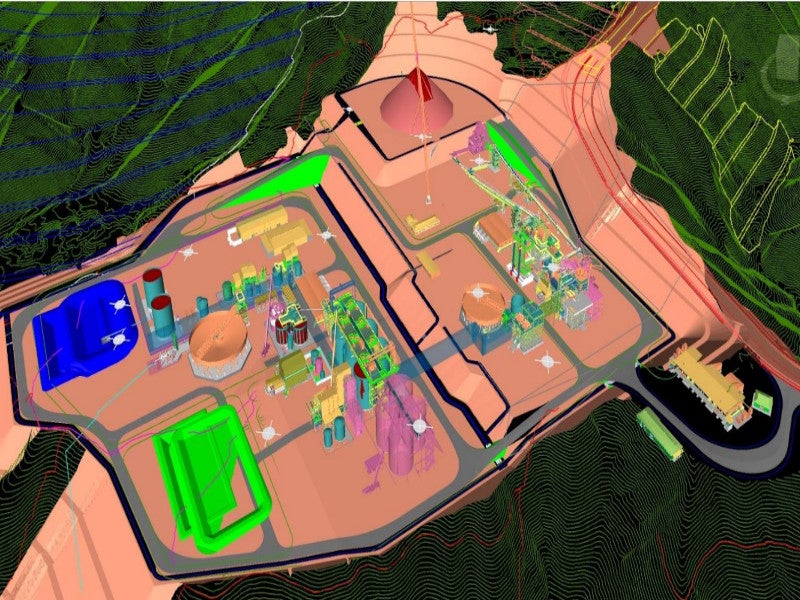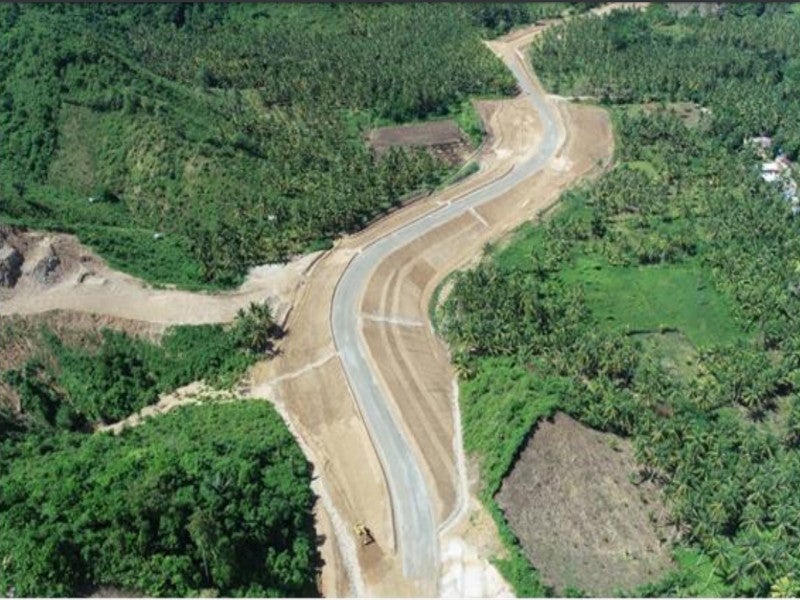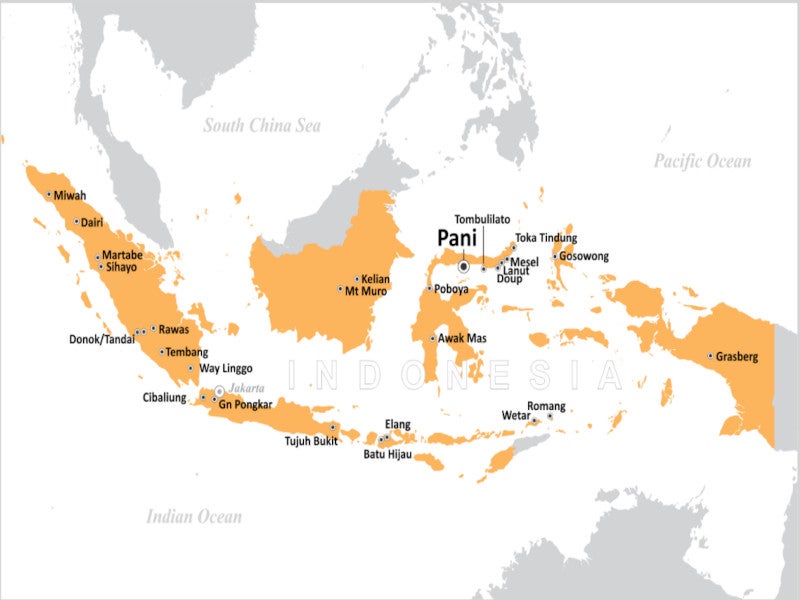The Pani Gold project, situated in the Gorontalo province of Indonesia, is undergoing development to become an open-pit mine.
It is poised to emerge as one of Indonesia’s largest primary gold mines.
Merdeka Copper Gold, an Indonesian company specialising in metal and mineral mining, will develop and operate the mine.
The Pani Gold project will start with an initial investment of $250m for a heap leach (HL) processing facility with a capacity of seven million tonnes per annum (mtpa).
The life of mine is expected to extend over a period of 16 years from 2025 to 2041.
Merdeka plans to invest a further $633m to construct a carbon-in-leach (CIL) processing facility with a capacity of 7.5mtpa.
The CIL facility is expected to commence construction in 2027 followed by commissioning in late 2028
A subsequent expansion of the CIL circuit is planned for commissioning in 2031 enhancing production capacity to 12mtpa, which will necessitate an additional investment of approximately $294m.
The project is estimated to have a peak annual gold production of 500,000oz from the HL and CIL processes.
The first gold production using the HL process is anticipated in 2025, followed by the CIL process in 2028.
Project location
The Pani Gold project is located in the central part of the north arm of Sulawesi in Indonesia. It lies within the Hulawa township of Buntulia district, Pohowatu regency, in the Gorontalo Province.
Geology and mineralisation
The Pani Gold project is situated within North Sulawesi’s Tertiary magmatic arc.
This arc comprises pre-tertiary basement metamorphics and granitic intrusions, which are unconformably overlaid by late Tertiary volcanic formations and associated sedimentary rocks.
These formations include Oligo-Miocene submarine volcanics and sediments, as well as late Miocene-Pliocene subaerial volcanics.
The Pani Gold project’s licence areas cover the Plio-Pleistocene rhyodacitic Pani Volcanic Complex, situated within a large, circular structure interpreted as a caldera with a diameter of 25km.
Resources
The project’s resources are estimated to include indicated and inferred resources of 281.3 million tonnes (t), grading 0.74g/t gold and 0.82g/t silver.
The total contained gold and silver is estimated at 6.7 million ounces (moz) and 7.5moz, respectively.
Mining method
The Pani Gold project will be developed using conventional open-pit mining techniques, taking advantage of the topography and the shallow nature of the mineral deposit.
Mining operations will be undertaken with a strip ratio of 0.49 for the heap leach and 0.56 for the combined heap leach and CIL operation.
The mine will follow an owner-operated approach with a fleet featuring a mix of conventional hydraulic excavators/shovels and dump trucks.
Ore processing at heap leach plant
The run of mine (ROM) ore will undergo a three-stage crushing in primary, secondary, and tertiary crushers.
Crushed ore from the secondary crusher will be screened and stockpiled or undergo further crushing in the tertiary crusher.
Lime will be added as a neutralising binder, and the material will then be stacked on the heap leach pad using truck dumping and spreading techniques.
The pregnant leach solution from the leach pad will be directed to an absorption column, where gold particles will be absorbed by carbon leach.
The gold-laden carbon will be eluted, acid-washed, and further refined in an electrowinning circuit to produced ore.
Ore processing at carbon-in-leach plant
The ROM ore will undergo crushing in a primary crusher. The crushed ore will be stockpiled before being fed into a semi-autogenous grinding mill.
A second ball mill and pebble crusher will be added when expanding to 12mtpa to maintain the target grind size with the increased throughput.
The milled ore will pass through a classification screen and be thickened before leaching. The leached product will then be processed in a series of CIL tanks.
The carbon loaded with gold from the CIL tanks will be screened, acid-washed, and eluted for further processing.
The concentrate from the elution column will undergo electrowinning to produce a gold metal sludge, which will then be dried in an oven and smelted in a furnace to produce the final gold ore.
The CIL tailings will undergo cyanide detoxification and then thickened before being deposited in the tailings storage facility.
Site infrastructure
The project site is accessible via the Trans-Sulawesi Toll road.
The Pani Gold project can be reached via a 5km paved road from Marisa City to Hele City, followed by another 10km drive to the project site.
The power requirement for the project will be met by Perusahaan Listrik Negara (PLN), the Indonesian state-owned national power supplier. Merdeka Copper Gold signed a 36MW power purchase agreement with PLN in August 2023.
The CIL operation will generate tailings that will be stored in two tailings storage facilities.
The first TSF is scheduled to be commissioned by late 2028, providing capacity for 27 million tonnes of tailings, which will suffice for roughly four years of storage.
A second TSF, to be located approximately 8km from the CIL plant, will accommodate the remaining life of mine tailings production, with a capacity of up to 200 million tonnes of tailings.






